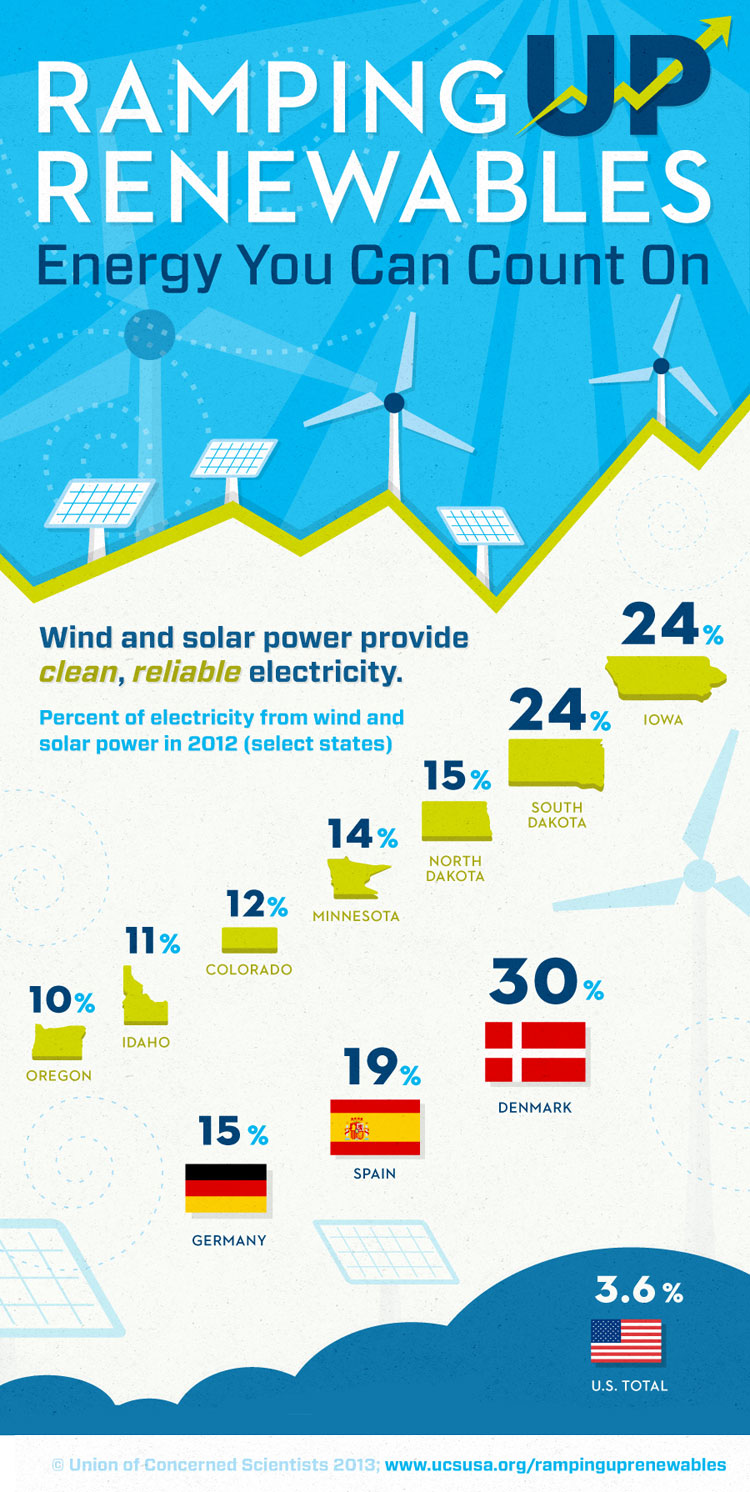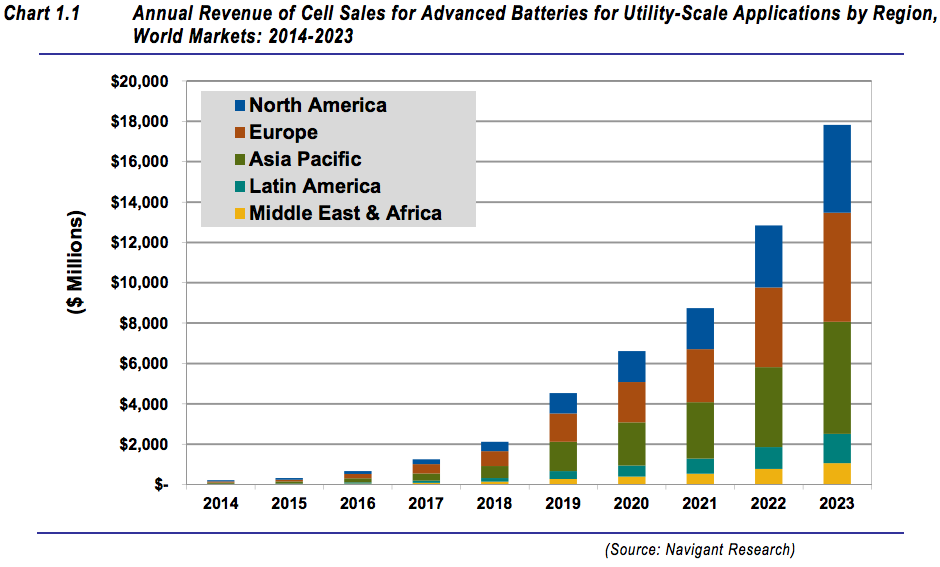 It wasn’t that long ago–what, just seven, eight years ago now–that solar power was considered, justifiably, an expensive niche technology. Sure, environmentally solar power has always reigned supreme and there were enough people wanting clean energy for their homes to keep the industry in business, but solar was just too costly for mainstream use.
It wasn’t that long ago–what, just seven, eight years ago now–that solar power was considered, justifiably, an expensive niche technology. Sure, environmentally solar power has always reigned supreme and there were enough people wanting clean energy for their homes to keep the industry in business, but solar was just too costly for mainstream use.
But behind the scenes, the technology was improving and its costs began dropping. China went into solar in a big way, further reducing costs through mass production. Germany’s long switch to renewables, accelerated by Fukushima, meant another giant market for solar, and solar’s costs didn’t just drop over the past several years, they plummeted.
Indeed, they’ve dropped so far so fast most people still don’t realize what has happened. No wonder then that a public opinion poll released this week found 70% of Americans still say cost is a barrier to their installation of solar power.
Given the plethora of new financing options for solar power–including no-money-down leasing options–the direct cost of solar installation should no longer be a problem for any homeowner (indirect costs, however, still can be; in my own case, it’s the cost of cutting down my neighbor’s trees–a few thousand dollars–that is blocking my use of solar).
Another potential barrier to widespread rooftop solar installation is that, without backup storage, home solar doesn’t provide power 24/7. And such storage has so far been expensive, and mostly not available at all.
That’s about to change.
In an article titled, Renewable Energy Storage Gains Critical Mass, Charles Thurston writes, “A host of U.S. renewable energy storage executives recently gathered here in the Silicon Valley are referring to the rapid expansion of the storage industry by comparing it to the solar power industry six or eight years ago, before that companion sector became the juggernaut it is now.”
Peter Rive, co-founder of SolarCity is quoted in the article, “In three to five years, storage will be a standard component of residential solar power, not optional, but deployed with every solar system.” Rive knows what he’s talking about: his cousin Elon Musk of Tesla Motors is already building a giant “gigafactory” in Nevada to produce batteries for Tesla cars and SolarCity rooftop solar installations.
 Battery storage, by the way, isn’t going to be limited to relatively small systems for single houses. Utility-scale storage is also a growing business, and cost reductions and growth there are projected to fall, just like solar power, over the next several years as well. That means that large solar power plants also will be able to provide significant power during nighttimes (and wind power during downtimes). Indeed, the utility-scale storage business isn’t just growing, it’s projected to boom, as the graph to the right, taken from this article that also foresees a bright future for the industry, indicates.
Battery storage, by the way, isn’t going to be limited to relatively small systems for single houses. Utility-scale storage is also a growing business, and cost reductions and growth there are projected to fall, just like solar power, over the next several years as well. That means that large solar power plants also will be able to provide significant power during nighttimes (and wind power during downtimes). Indeed, the utility-scale storage business isn’t just growing, it’s projected to boom, as the graph to the right, taken from this article that also foresees a bright future for the industry, indicates.
To take full advantage of the advances in storage technology will require grid improvements, however; something progressive energy companies are already working towards.
If the skyrocketing growth of solar power, especially solar, were enough for pundits to begin talking about the “utility death spiral” for those utilities not adept enough (and let’s face it, most electric utilities remain mired in the 20th century–and not necessarily even the 1990s) to adjust to the widespread use of renewables, then the combination of solar plus storage may move the concept from discussion to reality.
There’s still time for utilities to make the necessary changes to accommodate the 21st century. On an absolute scale, solar still generates only a very small portion of the nation’s electricity. But it’s the growth rate that scares the nuclear- and coal-dependent utilities, and gives increasing hope to those of us who believe in clean energy.
The question is whether most utilities are structured to make those changes. In an absolutely essential read for anyone interested in the future of our energy system, Dave Roberts of Grist points out (in bold, lest anyone miss the point): “Our power utilities are structured to oppose our social and environmental goals.”
That’s a problem, both for utilities and society. A second problem, but only for utilities and decidedly not for society is this: “Solar PV is mostly a threat to utility investors and shareholders, not ratepayers.”
Utilities have a clear incentive to address that second problem, but they probably can’t do it effectively unless they address the first problem too. Whether utilities can change that much remains in question, although Roberts quotes extensively from a recent Energy Law Journal article that suggests it’s at least possible.
Read Roberts’ article, seriously.
In any case, whether the traditional utilities get it in time or not, expect solar’s growth to continue to soar. At the moment, at least, there is no shortage of money behind solar. In fact, as this article points out, there is a “voracious” amount of money flowing into solar right now. Still, more will be needed even in the near future. Because, as one industry executive says, there is a “bottomless demand” for solar.
At least some big utilities are themselves now trying to get into the rooftop solar market. But not all are agreed on whether that’s a good thing.
Right now, solar is benefiting from a federal tax credit that is set to drop from 30% of a system’s cost to 10% in 2016. But the solar industry will be trying to get that 30% credit extended. It’s clearly the Solar Energy Industries Association’s (SEIA) highest priority. SEIA President Rhone Resch didn’t exactly mince words at the association’s recent annual conference:
Resch declared the start of a campaign to extend the ITC and promised that “as sure as World War I started in 1914, if the Koch Brothers and their allies come after solar, 2014 will be the beginning of World War III.”
Solar will “be fighting an uphill battle every step of the way,” Resch said. But because polls show “more than 90% of Americans support greater development of solar energy,” he explained, “we’re going to have a bigger, more determined army, motivated by a nobler, more righteous cause.”
The new campaign will “pound away at the fairness argument,” Resch said. Since the 1914 enactment of the oil and gas industry’s Intangible Drilling and Development Costs tax code benefit, he explained, the average annual subsidy has been $4.8 billion while renewables have received only $370 million per year for the far fewer years they have had tax incentives.
“How is that fair? 100 years for big oil but just 10 years for the 30% solar ITC,” Resch asked. Yet many in Congress who are “allies of the Koch Brothers and other anti-solar groups” want to eliminate the ITC. “Forget about it,” Resch warned them. “Walk away.”
Meanwhile, you can find out how your state ranks in solar power support at SolarPowerRocks’ website here. Spoiler: New York ranks first, and Idaho comes in dead last. The rest of you–check it out.
Michael Mariotte
October 24, 2014
Permalink: https://www.nirs.org/2014/10/24/is-storage-the-new-solar/
Please support GreenWorld with your tax-deductible contribution on our donation page here. We gratefully appreciate every donation of any size–your support is what makes this publication possible.
Comments are welcome on all GreenWorld posts! Say your piece above. Start a discussion. Don’t be shy; this blog is for you.
If you’d like to receive GreenWorld via e-mail, send your name and e-mail address to nirs@nirs.org and we’ll send you an invitation. Note that the invitation will come from a GreenWorld@wordpress.com address and not a nirs.org address, so watch for it.
If you like GreenWorld, you can help us reach more people. Just use the icons below to “like” our posts and to share them on the various social networking sites you use. And if you don’t like GreenWorld, please let us know that too. Send an e-mail with your comments/complaints/compliments to nirs@nirs.org. Thank you!
GreenWorld is crossposted on tumblr at https://www.tumblr.com/blog/nirsnet




Reblogged this on your passport to complaining and commented:
On the failure of the media to keep up with the changes in solar power and the implications for old style utilities
Energy has changed, solar has changed and so have batteries and storage. Although initial entries into renewables was slow, it is experiencing a surge of investment and interest as well as technical innovation. We are moving towards making our agreements in Paris a reality.